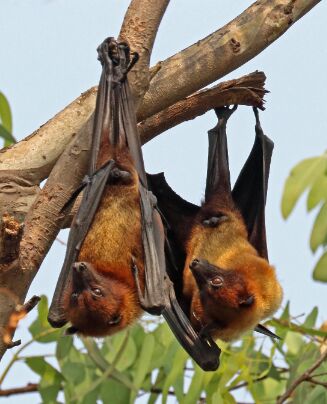A bigger problem

To the relief of Keralites, samples of the eight of the 11 symptomatic individuals who had been in contact with the 12-year-old deceased, Mohammed Hashim, have been found to be negative. Thanks to the quick and prompt steps by the authorities, the situation seems somewhat in control. The state has been dealing with the Nipah outbreaks since 2018 when the virus first took the state off-guard. The situation this time around is compounded by the fact that Kerala is already reeling under COVID-19 crisis — reporting around 60 per cent of the national cases daily. The administrative and financial burden on the state can be imagined at this point in time. In the larger perspective also, recurrence of Nipah outbreak in Kerala is an unwelcome sign. It is intriguing as to why the virus that was first spotted in Malaysia way back in 1998 — killing 105 of the 265 infected persons — has become so active in Kerala after two decades. The reasons are not very difficult to figure out if we go by what health experts around the world have been suggesting. Since Nipah is a zoonotic virus, it certainly has a correlation with animal sources — fruit bats to be precise — and other animal carriers. Back in 1998, Malaysia had to cull a large number of pigs to contain Nipah virus. But as animals have been around us for the most part of our history, there must be some other third element that is prompting more frequent and dangerous virus outbreaks over the past few decades. That missing element is human's interaction with the environment and climate. The Malaysian Nipah outbreak is largely attributed to the destruction of forests — the home and fruit reservoirs of the fruit bats. Consequently, these bats made their way to farms and orchards — infesting fruits and other eatables, enabling Nipah to make inroads in human territories. Though epidemics and pandemics are not new phenomena for the human race, it is an observable fact that frequency and intensity of viral outbreaks have increased significantly, rather threateningly. Currently, we are losing human beings in unprecedented numbers despite having progressed massively in medicine and healthcare, unlike in the case of centuries-old outbreaks. The most frightening thing about Nipah is its fatality rate. When Kerala first saw the Nipah outbreak in 2018, 17 out of the 18 infected persons had lost their lives. This is quite different from the SARS-Cov-2 virus where the fatality rate lingers around one per cent. This effectively means that chances of survival after being infested with Nipah virus is relatively much lower if there is laxity in diagnosis. The extreme manifestations of the Nipah infection are encephalitis and myocarditis and the symptoms resemble each other as well. Given the frequent pattern of viral outbreaks, a ready frame of mind among healthcare workers has to be developed earliest possible, which will prevent them from being confused in recognizing the symptoms. A laxity was clearly visible in the current case in which the boy who died on Sunday was taken to four healthcare institutions — including the government Medical College Hospital — before he died at a private hospital. Clearly, there was a massive delay which not only cost the boy his life, but also ended up endangering the safety of more than 250 people, of which 129 are healthcare workers. The region also had to temporarily halt its vaccination drive for the time being. Now this is too much of a cost to be paid for laxity and negligence. It is needless to say that viral infections have gone on to become one of the most threatening realities in the present world. It has to be in our thinking and we need to be suspicious all the time for the sake of safety. The Kerala government has stepped up its efforts to control the situation. Of the samples from 11 symptomatic persons, eight (those which were sent to Pune Institute of Virology) have been found negative. The samples from the remaining three persons are being tested at the Medical College Hospital, Kozhikode. Apart from this prompt response, certain long-term measures should be considered. Firstly, extensive research exploring the correlation among growth-guided human behavior, environment and animal habitats and feeding habits would be highly appreciable at this juncture, as zoonotic viral outbreaks are no more once-in-a-century phenomenon; these pervade our daily lives. For Nipah, the efforts towards preparing a vaccine should be ramped up. Nipah, along with other viral outbreaks, need to be seen in a larger picture — as a function of human behavior vis-a-vis natural habitats of animals.




